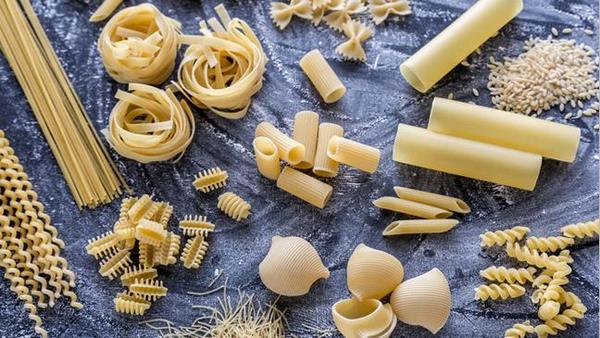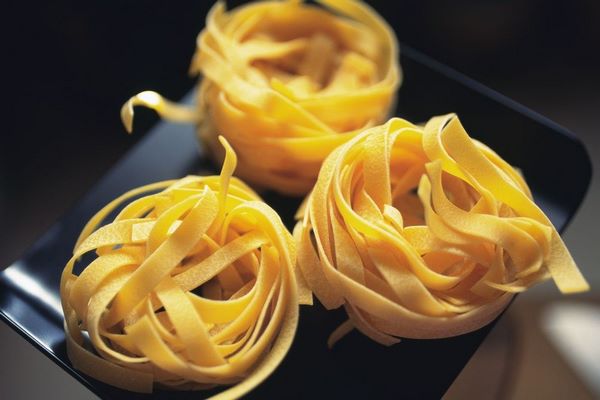A simple combination of flour and water opens up thousands of possibilities for the culinary experts of the planet. Nowadays, even specialists are not able to count the exact number of Italian pasta types. Some people say that there are more than a hundred types of pasta, and some say that there are almost five hundred varieties. It is amazing that every kind has a unique taste and every home chef has the opportunity to create new dishes every day. What are the most popular Italian pasta types? How to recognize them and how to cook them so that our dish is delicious and full of taste and flavor? We shall give you some useful tips so that you can serve the perfect dinner to your family.
What are the most popular Italian pasta types?
There are different ways to categorize pasta – one is by size, another categorization is by type of flour, a third way is divide the different types is by freshness. One of the simplest ways to categorize past is by size – long (lunga) and short (pasta corta). Obviously, long pasta is thin and long and includes varieties like fettuccine, bucatini, vermicelli (angel hair) and short types are small-sized and this group include a huge variety – penne, farfalle, rigatoni, fusilli, etc.
Pasta can be divided into three major categories – dry, fresh and stuffed. While dry pasta can be bought in any supermarket and kept in the pantry for months, fresh pasta is either cooked instantly or preserved for a few days. Stuffed types also come in a wide variety – from ravioli, tortellini, cappelletti, agnolotti, fagottini, to cannelloni and manicotti. Stuffing includes cheese, meat or fish, even chocolate.
Italian pasta types vary in preparation methods as well. Depending on the type of flour and the ingredients it can be classified as follows:
- Pasta made from wheat flour, usually all-purpose flour, is soft and tender, and often all purpose flour is used for homemade pasta.
- Semolina is flour from durum wheat and has a more intense yellow color, a very dense consistency and a richer taste, in comparison with the flour all-purpose flour.
- Wholegrain (whole wheat) pasta can be distinguished by a darker color, rich nut and wheat tastes. They have a lot of protein and fiber. The disadvantage is the high density of even finished products. In Italy, whole-grain flour is used to impart a unique flavor and color to traditional pasta.
- Egg pasta – adding egg yolks to the dough makes it bright yellow and tender and this is one of the most popular types of pasta.
- Eggless pasta is made from flour and water and the dough can be shaped in any form. This is an option for people who suffer from allergy to egg whites or yolks.
- Gluten free pasta is made from rice, potato starch or cornmeal, amaranth, millet and even pea flour and, although not typical Italian, it can be found in supermarkets and specialized stores as an option for people who have gluten intolerance and allergic reactions.
Italian pasta types – how to cook them properly?
Italian pasta types come in different textures and shapes and each type needs to be cooked differently. Usually, cooking time depends on surface-to-mass-ratio. For example, vermicelli (angel hair) needs a few minutes while the twisted fusilli requires more time. Here are some useful tips for home chefs:
Long pasta varieties:
Vermicelli (Capelli d’angelo, Angel hair) – this variety resembles classic spaghetti, but vermicelli is smaller in length and width. Traditionally, vermicelli are served with light tomato sauces or with sauces based on fish or seafood, vegetable sauces with addition of zucchini, eggplant and pepper.
Bucatini (also known as perciatelli) is a thick, long variety, about 25-30 cm, and resembles spaghetti, but have a hollow center. The most suitable sauce for bucatini is amatricana but you can try aglio e olio recipe as well. Bucatini can be served with vegetable sauces made from tomato passata and pepper, eggplant, zucchini, olives and a small addition of capers. In Italian cuisine, this pasta is often served with meat, vegetables, cheese, eggs and anchovies.
Linguine is long thin paste. It looks like a thin and flat strip. This is a classic Italian pasta and often served with sauces based on fresh tomatoes. A good combination will be the addition of fresh vegetables and sauces with garlic and fish. Linguine is often served with pesto sauce.
Fettuccine, like Tagliatelle, is also one of the types of “nests” pasta and is thin, long and flat stripes of dough about 7-8 mm wide. The name comes from the Italian “Fettuccia”, which means “ribbon”. Fettuccine is served with spicy sauces from tomatoes and fish or with light sauces of fresh vegetables, herbs and shrimp. The most famous dish is “Fettuccine Alfredo”, invented by the owner of a Roman restaurant Alfredo Di Lelio.
Tagliatelle is long flat pasta, similar to Fettuccine, but it has a smaller width. It comes from the Emilia-Romagna region and is usually made in the form of “nests”. Due to the porous and rough texture and flat shape of the Tagliatelle, any sauce is well kept on its surface. Other long varieties are Pappardelle, Spaghetti, Spaghettini, Spaghettoni, Maccheroncini, Bavette, Mafaldine, etc.
Short pasta comes in all sorts of shapes and numerous varieties:
Fusilli is a short, spirally twisted pasta. The name comes from the Italian word “Fuso”, which in translation means “spindle”. Due to the spiral shape, this type perfectly holds any sauce on its surface – meat and cream sauces, as well as sauces based on cheese, tomatoes with addition of eggplant, zucchini, pepper, olives, etc.
Penne is, perhaps, the most popular tubular Italian pasta. Short, with oblique cuts along the diagonal and ribbed surface. The name comes from the Latin “penna” which means “feather” or “quill”. Penne comes in two main varieties “penne lisce” (smooth) and “penne rigate” (furrowed). Penne comes from the region of Campania and in other regions of the country this type of pasta comes under different names, for example, in Umbria it is called “spole”. Penne has a number of varieties differing in size and thickness – Penne mezzane rigate, penne mezzane lisce, penne a candela, penne piccolle rigate, Pennette, etc. Penne is very well combined with various sauces, including classic tomato or meat, as well as cream sauces with cheese, as well as fish. Penne is excellent for preparing all kinds of casseroles. The form of Penne Rigate is a best in the classic Boscaiola recipe.
Farfalle (butterflies) is one of the most popular types of pasta, especially among children, for the particular bow tie shape. These are square pieces of dough compressed in the middle. In appearance, they resemble bow ties or butterflies. The “wings” of butterflies are slightly thinner than the base, so after cooking they are softer and tenderer. In addition to the classic farfalle of standard sizes, there are also other types – farfalle rigate, farfalle tonde, farfallette, mini farfalle, farfalline, colorful farfalle which is colored pasta and the most common combination of colors is green, white and red, which are the colors of the national flag of Italy. This variety universal and can be served with light vegetable based sauces, fish sauces and more dense creamy, cheese and tomato sauces.
Other short pasta varieties are Girandole, Cavatappi, Cellentani, Pipe rigate, Tortiglioni, Maccheroni, Campanelle, Conchiglie, Gemelli, Lanterne, Orecchiette, Rotelle, Anellini, Cavatappi, Ziti, etc.
There is also a very small pasta type, called pastina, and some of the most famous are shaped as beads (acini di pepe) or starlets ( stellinе), which is used in soups or salads, but there are quite many pastina varieties. We also have to mention gnocchi, which are made from potatoes and flour and are usually served with tomato sauce, spinach and ricotta, melted butter and cheese.
The group of stuffed pasta includes ravioli, tortellini, agnolotti, cannelloni, manicotti, cappelletti, etc. In this group we have to mention lasagna, which is sheet pasta, cooked in layers.
Lasagna (lasagne) is a special flat pasta, quite large and thin, used for making the same-named dish in a variety of options. Bolognese is widely known and includes bechamel sauce, meat stuffing (ragu) and parmesan cheese. Unlike most other varieties, lasagna is cooked in the oven (pasta al forno). Lasagna verde is another worldwide popular recipe with spinach.
Ravioli are small dumplings with a variety of stuffing – meat, fish, cheese, vegetable and even chocolate – between two layers of thin dough. They can be square, rectangular, round or in the form of a crescent. Semi-circular ravioli are often called agnolotti. Ravioli and agnolotti are usually served with simple sauces based on tomatoes and basil so that the sauce does not suppress the flavor and taste of the stuffing.
Tortellini are small ringlets stuffed with meat, ricotta cheese, spinach or other vegetables and can be served with cream sauce, as well as in broth.
Cannelloni are big tubes, stuffed with ricotta cheese, spinach or various types of meat. They are baked in sauce usually tomato or bechamel. Manicotti look like cannelloni, but they are rigid.




















